 |
 |
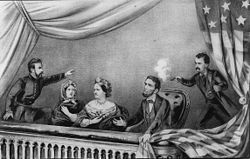
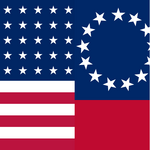
The American Civil War (1861–1865) was a sectional rebellion against the United States of America by the Confederate States, formed of eleven southern states' governments which moved to secede from the Union after the 1860 election of Abraham Lincoln as President of the United States. The Union's victory was eventually achieved by leveraging advantages in population, manufacturing and logistics and through a strategic naval blockade denying the Confederacy access to the world's markets.
In many ways, the conflict's central issues – the enslavement of African Americans, the role of constitutional federal government, and the rights of states – are still not completely resolved. Not surprisingly, the Confederate army's surrender at Appomattox on April 9,1865 did little to change many Americans' attitudes toward the potential powers of central government. The passage of the Thirteenth, Fourteenth and Fifteenth amendments to the Constitution in the years immediately following the war did not change the racial prejudice prevalent among Americans of the day; and the process of Reconstruction did not heal the deeply personal wounds inflicted by four brutal years of war and more than 970,000 casualties – 3 percent of the population, including approximately 560,000 deaths. As a result, controversies affected by the war's unresolved social, political, economic and racial tensions continue to shape contemporary American thought. The causes of the war, the reasons for the outcome, and even the name of the war itself are subjects of much discussion even today. (Full article)
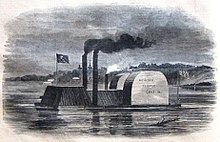
Black Terror was a fake warship used in the American Civil War to bluff Confederate forces into destroying the partially-salvaged remains of the ironclad USS Indianola. Union forces were advancing to control the Mississippi River and had made two attempts to capture Vicksburg, Mississippi, in 1862. Early the next year, the ram USS Queen of the West moved downriver to interfere with Confederate shipping on the Red River; Indianola was sent down a few days later. However, Queen of the West was disabled and captured after an encounter with Confederate field fortifications, and Indianola was severely damaged on February 24 after an attack by the repaired Queen of the West and CSS William H. Webb.
Not wanting Indianola to be repaired and enter Confederate service like Queen of the West, Union Navy officer David Dixon Porter had a fake ironclad constructed to bluff Confederate salvage workers into destroying the wreck of Indianola. A flatboat or barge was expanded with logs, and outfitted with fake cannons, lifeboats, and smokestacks. The fake vessel cost less than $9 (equivalent to $189 in 2020) and was named Black Terror. At 23:00 on February 25, the fake ship was released downstream, and successfully convinced the Confederates that it represented a real threat. Believing they faced an actual warship, the Confederate salvage crew of Indianola blew up the ship's remains, although some cannons were later recovered. The naval historian Myron J. Smith has since suggested that Black Terror was actually a later fake designed to reveal the location of Confederate artillery batteries, and that the story has been conflated with a possible earlier ruse aimed at forcing the destruction of Indianola. (Full article...)
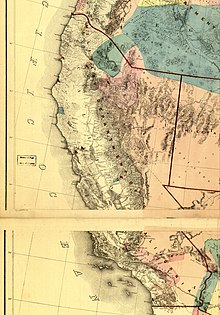
California's involvement in the American Civil War included sending gold east to support the war effort, recruiting volunteer combat units to replace regular U.S. Army units sent east, in the area west of the Rocky Mountains, maintaining and building numerous camps and fortifications, suppressing secessionist activity (many of these secessionists went east to fight for the Confederacy) and securing the New Mexico Territory against the Confederacy. The State of California did not send its units east, but many citizens traveled east and joined the Union Army there, some of whom became famous.
Democrats had dominated the state from its inception, and Southern Democrats were sympathetic to secession. Although they were a minority in the state, they had become a majority in Southern California and Tulare County, and large numbers resided in San Joaquin, Santa Clara, Monterey, and San Francisco counties. California was home for powerful businessmen who played a significant role in Californian politics through their control of mines, shipping, finance, and the Republican Party but Republicans had been a minority party until the secession crisis. The Civil War split in the Democratic Party allowed Abraham Lincoln to carry the state, albeit by only a slim margin. Unlike most free states, Lincoln won California with only a plurality as opposed to the outright majority in the popular vote. (Full article...)
Judah Philip Benjamin, QC (August 6, 1811 – May 6, 1884) was an American lawyer and politician. He was a United States senator from Louisiana, a Cabinet officer of the Confederate States and, after his escape to the United Kingdom at the end of the American Civil War, an English barrister. Benjamin was the first Jew to hold a Cabinet position in North America and the first to be elected to the United States Senate who had not renounced his faith.
Benjamin was born to Sephardic Jewish parents from London, who had moved to St. Croix in the Danish West Indies when it was occupied by Britain during the Napoleonic Wars. Seeking greater opportunities, his family immigrated to the United States, eventually settling in Charleston, South Carolina. Judah Benjamin attended Yale College but left without graduating. He moved to New Orleans, where he read law and passed the bar. (Full article...)
- ... that Carter Moore Braxton fought for the Confederacy throughout the American Civil War and, according to one report, had seven horses killed under him but avoided any wounds?
- ... that some historians believe that Steele's Greenville expedition marked a shift in the Union's war policy?
- ... that singer Frank Croxton performed a duet with his father for the unveiling of a monument to a Confederate States Army general?
- ... that Enoch Marvin Banks resigned from the University of Florida because of public outrage over his belief that the American Civil War was caused by slavery?
- ... that according to one historian, James S. Rains made a "significant contribution to the Confederate war effort" by getting drunk?
- ... that Dubuque, Arkansas, was destroyed in the American Civil War and is now covered by the waters of Bull Shoals Lake?
- Attention needed
- ...to referencing and citation • ...to coverage and accuracy • ...to structure • ...to grammar • ...to supporting materials
- Popular pages
- Full list
- Cleanup needed
- The West Tennessee Raids
- Requested articles
- James Ashby (soldier) • Benjamin D. Fearing • James B. Speers • Charles S. Steedman • Battle of Barton's Station • Lawrence P. Graham • Frederick S. Sturmbaugh • Davis Tillson • Action at Nineveh (currently a redirect) • International response to the American Civil War • Spain and the American Civil War • Savannah Campaign Confederate order of battle • Native Americans in the American Civil War (currently disambiguation after deletion) • Battle of Lafayette • Battle of Sunshine Church • Requested American Civil War Medal of Honor recipients
- Expansion needed
- Battle of Boonsborough • Battle of Guard Hill • Battle of Rice's Station • Battle of Simmon's Bluff • Battle of Summit Point • Charleston Arsenal • Edenton Bell Battery • First Battle of Dalton • Blackshear Prison • Edwin Forbes • Hiram B. Granbury • Henry Thomas Harrison • Louis Hébert (colonel) • Benjamin G. Humphreys • Maynard Carbine • Hezekiah G. Spruill • Smith carbine • Edward C. Walthall • Confederate States Secretary of the Navy • Confederate States Secretary of the Treasury • David Henry Williams • Battle of Rome Cross Roads • Delaware in the American Civil War • Ironclad Board • United States Military Railroad • Kansas in the American Civil War • Rufus Daggett • Ebenezer Magoffin • Confederate Quartermaster-General's Department • First Corps, Army of Northern Virginia • Francis Laurens Vinton • Henry Maury • Smith's Expedition to Tupelo • Other American Civil War battle stubs • Other American Civil War stubs
- Images needed
- Battle of Lone Jack • Preston Pond, Jr. • Melancthon Smith
- Merging needed
- 1st Regiment New York Mounted Rifles and 7th Regiment New York Volunteer Cavalry
- Citations needed
- 1st Alabama Cavalry Regiment (Union) • 4th Maine Battery • 33rd Ohio Infantry • 110th New York Volunteer Infantry • Battle of Hatcher's Run • Camp Dennison • Confederate colonies • CSS Resolute • Dakota War of 1862 • Florida in the American Civil War • Ethan A. Hitchcock (general) • Fort Harker (Alabama) • Gettysburg (1993 film) • Iowa in the American Civil War • Second Battle of Fort Sumter • Samuel Benton
- Translation needed
The following Wikimedia Foundation sister projects provide more on this subject:
-
 Commons
Commons
Free media repository -
 Wikibooks
Wikibooks
Free textbooks and manuals -
 Wikidata
Wikidata
Free knowledge base -
 Wikinews
Wikinews
Free-content news -
 Wikiquote
Wikiquote
Collection of quotations -
 Wikisource
Wikisource
Free-content library -
 Wikiversity
Wikiversity
Free learning tools -
 Wikivoyage
Wikivoyage
Free travel guide -
 Wiktionary
Wiktionary
Dictionary and thesaurus
-

-

-

-

-
Random portal
- Shortcuts to this page: Portal:ACW • P:ACW

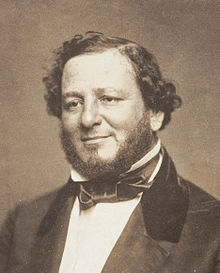








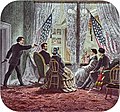



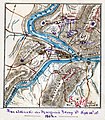


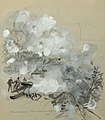






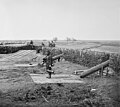

















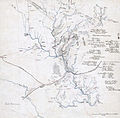














Recent Comments